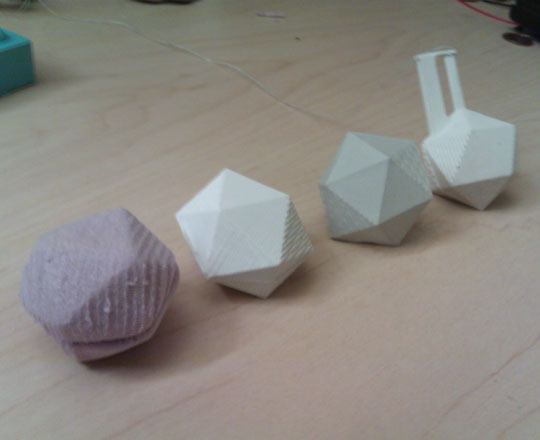Molding & Casting
This weeks assignment is molding and casting and so I decided to experiment with some 3D scanning and casting of electronics. For this I have made a scale model of my face and also attempted to build a self shaking dice.
Scanning
To get an accurate scan of my face I used a VIVID 910 3D digitizer which produces point cloud data from which a 3D surface can be obtained. To use this within solidworks I used the ScanTo3D Add-In as follows:
1) Include the Add-In by selecting Tools>Add-Ins>ScanTo3D
3) Open your point cloud file as you would a standard file
4) Once opened prepare the data using the Mesh Prep Wizard which is located within the Tools>ScanTo3D menu
5) Follow the wizard to smooth the surface and add missing point data
6) Use the Surface Wizard to convert the data to a solidworks surface from which the mold can be created.
To form a mold from this I simply created a rectangle around the area I wished to form a solid from and then extruded or cut the material upto the surface face.
Shopbot
Both the negative face mold and the initial dice prototype were produced using the shopbot with the standard foam. This process followed that of last weeks 'make something big' task and so went without issue. Note: When using PartWorks 3D make sure that you click apply after each of the stages otherwise it will return to the original settings as you move between each step.
Modela
To construct the mold for the dice I used the Roland Modela to machine the positive shape from which the silicon mold was cast. For this process I used the following settings:
Roughing Path
Overlap: 0.75 Speed: 20 Z Step: 2
Finishing Path
Overlap: 0.1 Speed: 20 Z Step: 1
Casting
While attempting to make the various dice I used both Drystone and Hydrostone and found that hyrdostone is the easiest of the two material to work with as it was more tolerant to inconsistencies in the mix.
When mixing the material if in doubt add a few grams more water making the material less viscous. My first attempts tended to fail due to the material solidifying and blocking the pour spout before the mold was full.
Electronics
To construct the shelf shaking dice I used a micro vibrator from Radio Shack with a 3 v coin battery and reed switch. This simply turns the motor on when the switch passes a magnetic field and so allows the device to be remotely controlled through the drystone.
I made 4 attempts at encasing the motor within the dice but failed to the motor to turn once the material had set. On each attempt I broke open the dice to attempt to understand why this was the case but could not find any obvious reason for this failure...
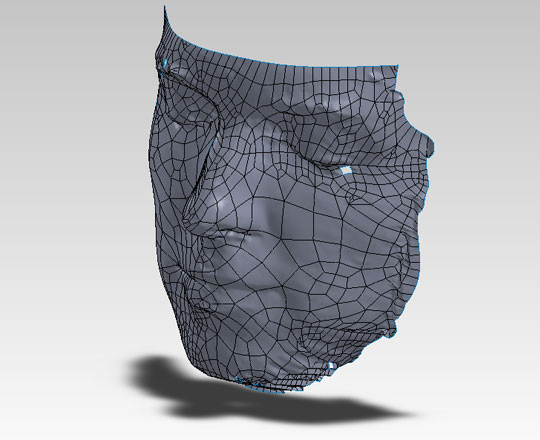
Point Cloud Data
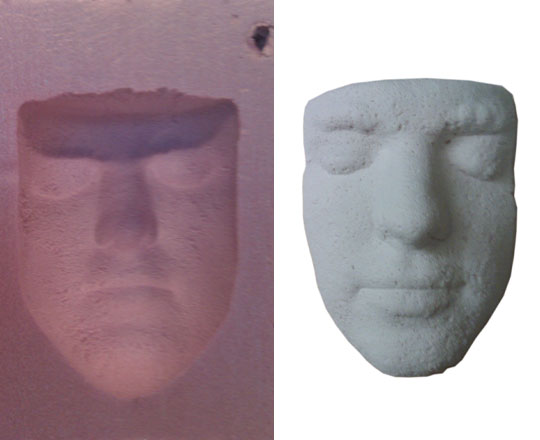
Negative Mold & Cast Face
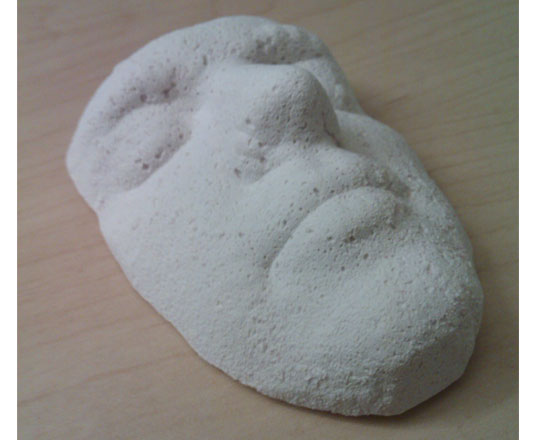
Final Cast
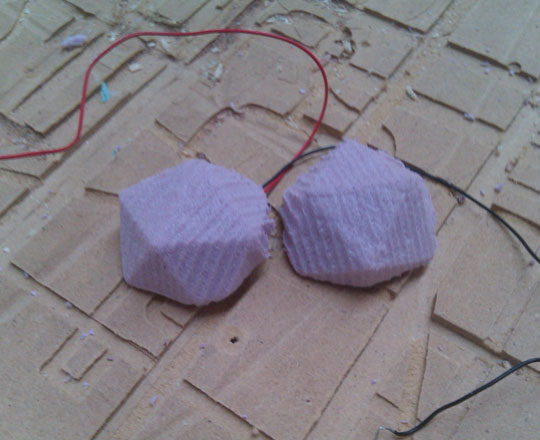
Prototype Dice & Motor
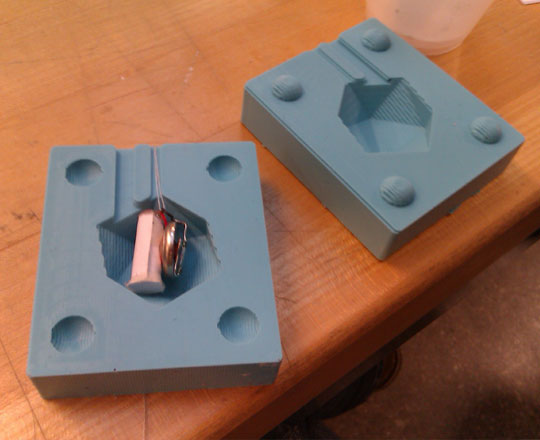
Oomoo Mold With Motor & Reed Switch
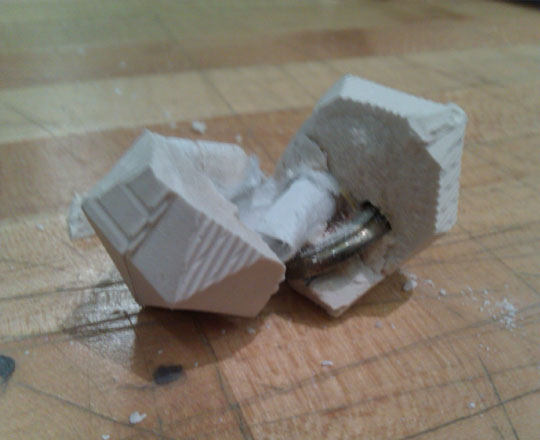
Failed Casting
